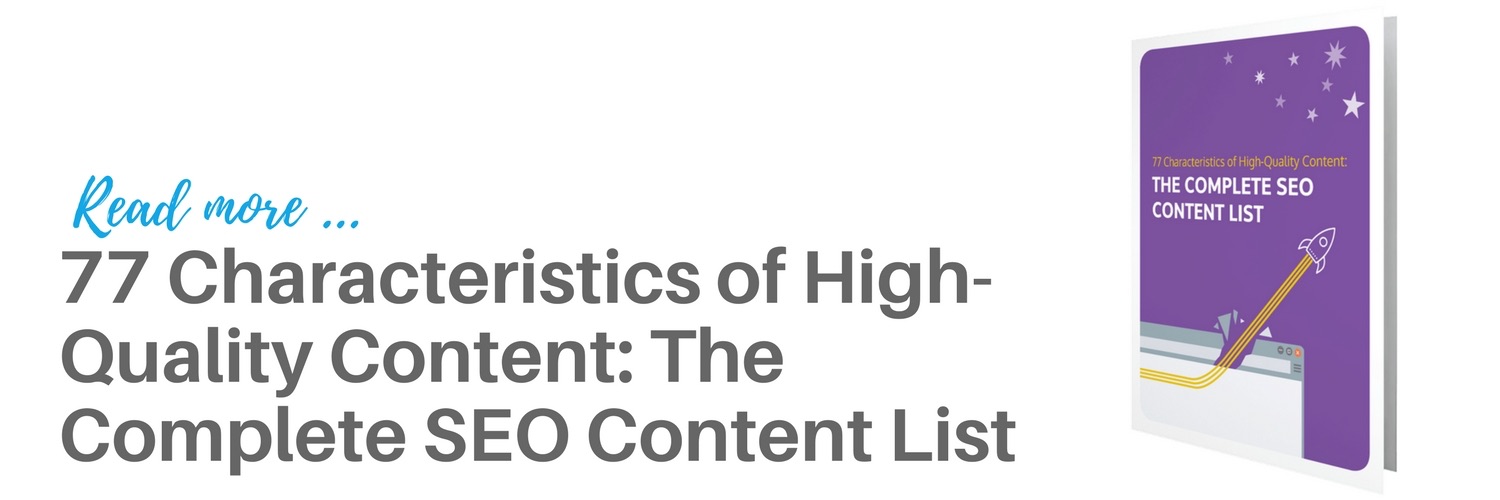Keywords that Convert: How to Find and Use SEO Keywords that Drive Sales [Free Worksheet]
What if you could glance at your long list of SEO keywords and identify exactly which ones are most likely to convert? It may sound like a fairy tale, but it’s absolutely doable.
Long tail keywords—keywords of 4 or more words—are often targeted with the goal of growing organic traffic, but they’re powerful for more than just traffic increases. People who search for long tail keywords are 2.5 times more likely to make a purchase.
Increased organic rankings and traffic are great, but eventually your SEO strategy has to drive revenue. By creating content that caters to long tail keywords with purchase intent, you can drive traffic from users who are at the bottom of the funnel and primed for purchase.
 Scroll to the bottom of this post to access our Long Tail Keyword Worksheet template. It will help keep you organized and focused as you discover, prioritize, and target keywords that convert.
Scroll to the bottom of this post to access our Long Tail Keyword Worksheet template. It will help keep you organized and focused as you discover, prioritize, and target keywords that convert.
Step 1: Compile a List of Long Tail Keywords

To find the keywords that users at the bottom of the funnel are searching, start by conducting long tail keyword research. There are several free tools available for identifying relevant long tail queries:
- LSIGraph – Type a broad keyword into LSIGraph to discover related queries. Add any relevant long tail keywords to your list.
- BloomBerry – Type a broad keyword into BloomBerry to get a long list of related questions that have been asked on forum sites. Look for consistencies in how relevant questions are worded to identify potential long tail keywords.
- Moz Keyword Explorer – Type a broad keyword into Moz Keyword Explorer, and it will populate a list of up to 1,000 related queries. Export the list, and remove keywords that are either less than four words or obviously unrelated to your business.
- Google Search Console – Use Google Search Console to find long tail keywords that are already populating results for your site.
To find long tail keywords using Google Search Console:
- Expand “Search Traffic.”
- Click “Search Analytics.”
- Check “Position.”

Look for keywords with low average rankings, or those that imply questions that your content doesn’t currently address. Add those keywords to your list.
Conducting keyword research will result in a long list of potential keywords to target, so remember to group them into composite, or “family” groups based on variations, related themes, and identical user intent. Creating good content — even sales-based content — requires thinking about keyword topics more than individual keywords.
Every family will not represent a keyword group that converts. User intent research is required to identify which long tail keywords have purchase intent.
Step 2: Identify Long Tail Keywords That Convert
To identify keywords that convert, an easy place to start is reviewing your list for obvious purchase-intent keywords:
- Keywords that contain “buy,” “purchase,” or “order” definitely signal purchase intent.
- Branded long tail keywords—those that utilize your brand or product names—are often used by searchers who are at the bottom of the funnel and determining if your solution is right for their needs.
Prioritize user intent research for those queries first, but don’t neglect less obvious keywords. To find all purchase-intent keywords—and to validate the hypothesis that obvious keywords have purchase intent—conduct a depersonalized search for each keyword on your list. Review the search results to determine if keywords are used by searchers at the bottom of the funnel.

Bottom-of-the funnel queries produce certain types of content in search results:
- Individual brand landing pages that highlight product features and benefits
- Third-party comparisons or reviews of a variety of related products/providers
- Case studies that detail customer successes with specific products
- White papers with in-depth coverage of how products can be utilized
- Pricing pages that present cost options for different subscription levels
If the majority of the first 10 organic search results populate these types of content, the keyword represents a dominant purchase intent.
Step 3: Prioritize Purchase-Intent Keywords
After isolating your list to include only purchase-intent keywords, it’s time to prioritize the list.

Keywords with the highest potential value should be targeted first. Answer a few questions to determine the value of each keyword:
- Is there a high enough search volume to justify creating content for the keyword? Type keywords into Moz Keyword Explorer or Google Keyword Planner to determine the average monthly search volume for each query. Make note of search volume next to your keyword.
. - Is the keyword crucial for your business? Some keywords may not have data for monthly search volume, but they may be worth targeting anyway. “No data,” or a blank box, doesn’t mean no one ever searches for that keyword—it means there’s not enough volume to provide a monthly average. If the keyword is critical to your business, it represents a significant opportunity for conversions—even if only five people a year search for it.
.
For the sake of research and reporting, use a small scale to indicate about how important each term is: 1 for crucial terms, 2 for moderately important terms, and 3 for those that can wait.
High-priority keywords should be those with decent monthly search volumes and those that are crucial to your business. Next, you’ll be ready to start creating content for those high-priority keywords.
Step 4: Create Content for Conversion Keywords
Before you start from scratch creating brand new content, review what you have to determine if existing content could be better optimized to for long tail keywords. In some cases, new content will be needed, but you’ll likely discover opportunities to optimize existing content instead of starting from scratch.

There are some guidelines to follow when optimizing or creating content for conversion keywords:
- Use the targeted keyword in headers and subheaders. Use the keyword naturally—in a way that wouldn’t sound weird if you said it in a conversation—and avoid keyword stuffing. Resolve any misspellings and add words as needed—never use keywords verbatim if they don’t make sense.
. - Cater to user preferences. From the earlier exercise, you know that all of these keywords have purchase intent, but pay attention to the types of content that users seem to prefer. Are most of the results branded sales pages? Pricing charts? Third-party comparison reviews? Design the content users prefer.
.
(But balance the approach by testing new content types as well. If you think a video, for example, would be effective, but there are no videos in search results, it might be because no one has tried it yet. Being the first could be a huge advantage.)
. - Target related keywords in a single piece of content. Each keyword does not need an individual piece of content. Long tail, purchase intent keywords that relate to the same topic — “buy marketing automation” and “best marketing automation platform” — should be sub-sections in the same piece of content. Multiple keywords could also be targeted in a single FAQ page that answers questions people commonly ask before committing to a purchase.
. - Optimize the SERP snippet. Conversions start with clicks, so don’t forget to craft a strategic SEO page title and meta description that stand out in organic results and entice users to click. Keywords in page titles might be losing clout as organic ranking factors, but they still communicate authority and empathy to users.
Start with your highest priority keywords, and either optimize existing content or create new content to drive traffic from searchers who are primed for purchase.
Discovering the Keywords That Drive Sales
Conducting long tail keyword research, and creating and optimizing content for purchase-intent keywords, will help you drive increased organic traffic from highly-qualified leads who are ready to convert.
Start by identifying existing opportunities for improvement. Collect low-ranking queries from Google Search Console, and optimize content for those keywords and their user intent. Earn higher rankings for that content, and provide better answers to the questions potential customers are asking.
Download the Worksheet:
What's Next?
Profound Strategy is on a mission to help growth-minded marketers turn SEO back into a source of predictable, reliable, scalable business results.
Start winning in organic search and turn SEO into your most efficient marketing channel. Subscribe to updates and join the 6,000+ marketing executives and founders that are changing the way they do SEO:
And dig deeper with some of our best content, such as The CMO’s Guide to Modern SEO, Technical SEO: A Decision Maker’s Guide, and A Modern Framework for SEO Work that Matters.






